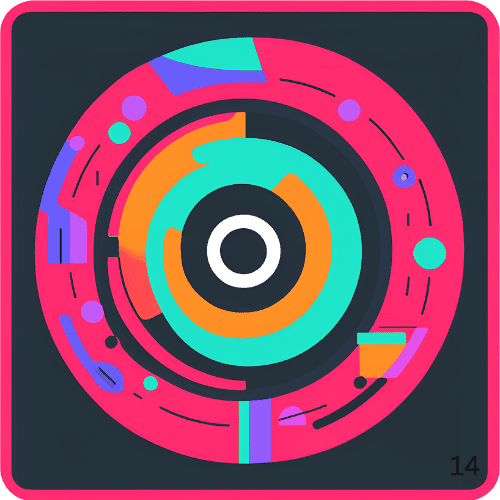Discover the most effective AI tools for book cover design that will help you create stunning covers without advanced design skills. Transform your ideas into professional designs.
In the fast-paced world of publishing, AI book cover design tools are changing how authors create eye-catching covers. As a writer, I’ve found that AI book cover generators are a game-changer. They let authors make professional-looking designs without spending a lot.
Now, anyone can make stunning book covers, not just professional designers. AI book design tools let authors create covers that grab attention and show off their unique style. These tools make it easy for anyone to create professional-quality graphics.
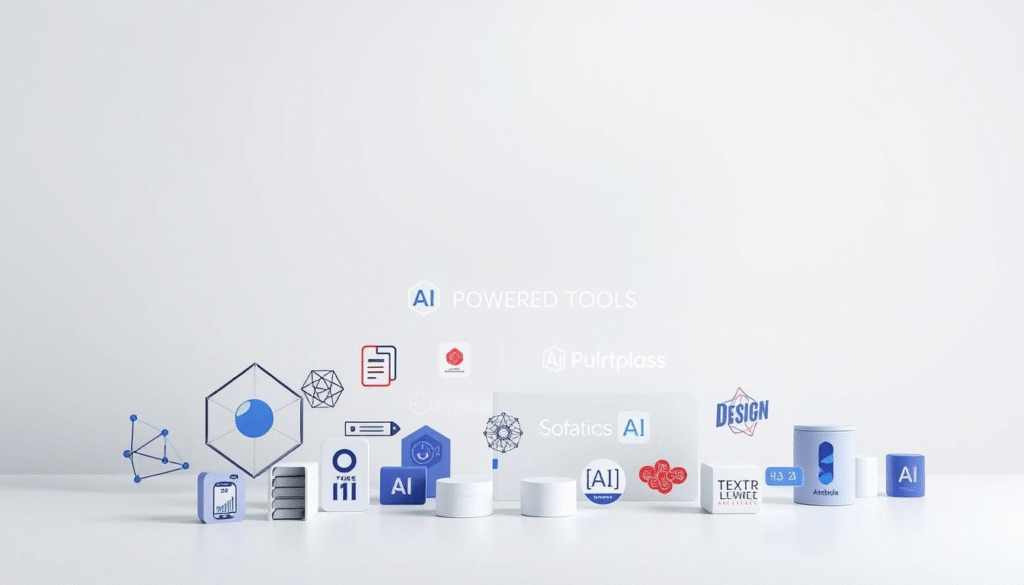
Exploring these AI wonders, I see where creativity meets technology. Whether you’re self-publishing or working with a small press, these tools can help. They let you make book covers that really stand out in a busy market.
Key Takeaways
- AI book cover generators democratize professional design
- No graphic design skills required to create compelling covers
- Cost-effective alternative to traditional design services
- Rapid turnaround for book cover creation
- Customizable options for various genres and styles
Understanding AI Book Cover Generation: A Revolution in Design
The world of book cover design is changing fast thanks to AI. I’ve seen this change, and it’s amazing. Artificial intelligence is making a big difference in how we create book covers.

AI tools are helping authors and designers in big ways. They offer new creative options. Now, anyone can get high-quality book cover designs without the old barriers.
The Changing Landscape of Book Cover Creation
Here’s how AI is changing book cover design:
- AI art is an affordable alternative to old design methods
- Trying out many design ideas is easy and fast
- Custom covers can be made with detailed text prompts
- Designers can keep up with new trends quickly
Key Advantages of AI-Powered Design
AI brings big benefits to book cover creation. Tools like DALL-E, Midjourney, and Stable Diffusion help creators:
- Make unique visual ideas in minutes
- Try different artistic styles easily
- Get professional designs without spending a lot
- Customize covers with great detail
With AI, authors can turn their ideas into eye-catching book covers. These covers grab readers’ attention and show off the author’s unique style.
Best AI Tools For Book Cover Design
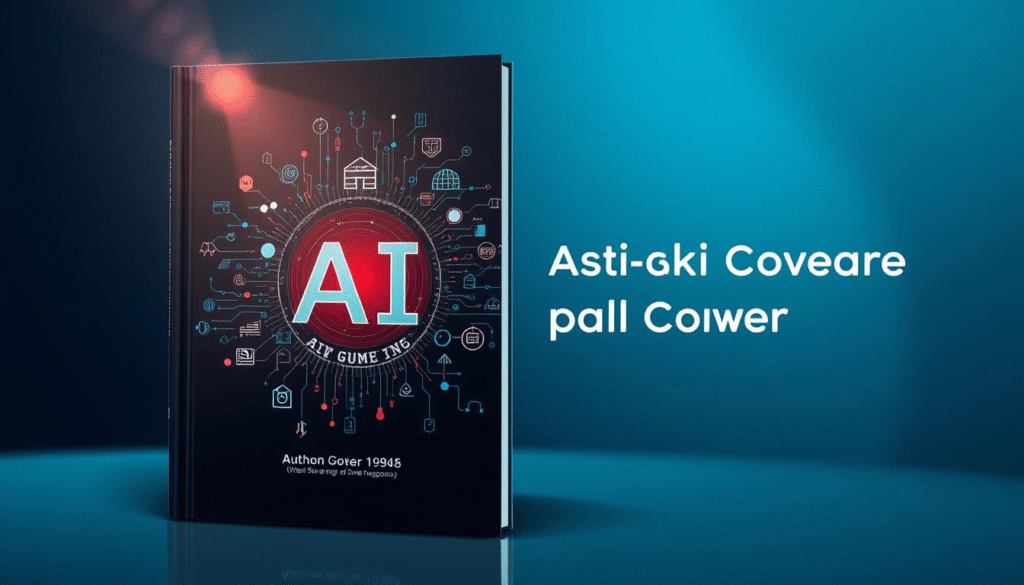
Looking for the best AI design software for book covers can change your publishing journey. I’ve found the top AI book cover tools. They help authors make stunning designs easily, without spending a lot or learning hard design skills.
Here are the most amazing AI tools changing book cover design:
- Canva: A user-friendly platform with thousands of customizable templates
- Midjourney: Advanced visual generation for unique artistic concepts
- DALL-E 3: Precision-driven image creation with exceptional detail
- Ideogram: Specialized in text integration and typography
- Adobe Spark: Professional-grade design with AI recommendations
These top AI book cover tools have amazing features. They make design easy for everyone. They offer:
- Custom font selection
- Color palette customization
- Genre-specific template libraries
- One-click design adjustments
- High-resolution image exports
Most AI design software lets non-registered users make up to 5 book covers for free. This saves time and money. It means authors of all levels can create book covers easily.
Midjourney: Creating Stunning Visual Concepts
Midjourney AI has changed the game for book cover art, giving authors a new tool for creative designs. This AI platform turns complex ideas into stunning images that bring a book’s story to life.

My time with Midjourney has shown its amazing ability to create unique book covers for all genres. Its skill in making surreal, dream-like images is unmatched by traditional design methods.
Advanced Features for Cover Art
Midjourney has some cool features for making book covers stand out:
- Artist-style image generation (e.g., recreating Van Gogh-inspired designs)
- High-resolution image creation
- Detailed prompt customization
- Multiple artistic rendering options
Genre-Specific Capabilities
The platform is great at making covers for specific genres. Whether it’s science fiction, romance, horror, or children’s books, Midjourney has the right tools.
Tips for Optimal Results
To get the best out of Midjourney AI for book cover art, follow these tips:
- Use specific, descriptive prompts
- Experiment with different stylization levels
- Refine images through multiple iterations
- Plan additional editing in Photoshop
While Midjourney opens up new creative doors, authors should keep an eye on copyright issues with AI-generated art.
DALL-E 3: Precision and Creativity Combined
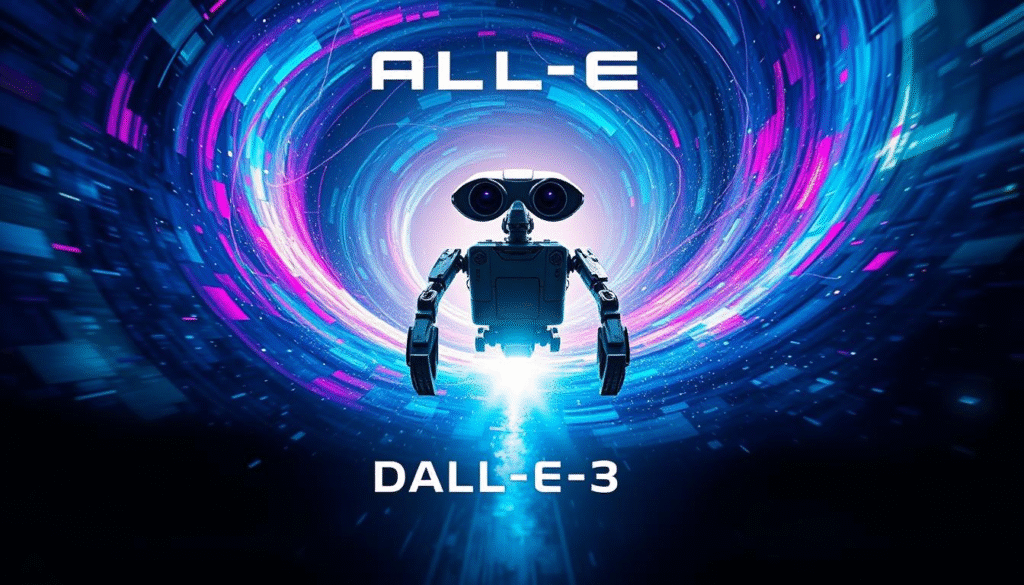
As an author, I’ve found DALL-E 3 AI to be a game-changer for book covers. It’s a tool that changes how we tell stories with images. It creates detailed and creative images that bring stories to life.
DALL-E 3 is unique in book cover design. It works with ChatGPT to turn descriptions into amazing images. It’s perfect for any book, from mysteries to fantasy epics.
- Generate hyper-realistic book cover images
- Create visuals across multiple storytelling genres
- Refine designs through conversational commands
- Democratize design process for independent authors
DALL-E 3 shines in creating realistic book covers. It can understand complex scenes and turn them into stunning images. The AI’s advanced algorithms keep the images high quality and true to the artist’s vision.
For authors looking for a budget-friendly option, DALL-E 3 AI is a great choice. It’s easy to use and allows for quick changes. This means writers can try out different cover ideas without spending a lot of money.
Ideogram: Mastering Text and Typography
Creating the perfect book cover is more than just great pictures. Ideogram AI changes the game by making text a key design element. It’s a smart tool for writers and designers.

As an author, I found Ideogram’s special skills in making text tell a story. It’s all about where you place the text and the font you choose.
Advanced Font Selection Strategies
Ideogram AI is a pro at picking fonts. It has tools that match fonts with book genres and styles. The platform offers:
- Advanced text-to-image generation capabilities
- Wide range of professional fonts and styles
- Automatic font recommendation based on book genre
- Customizable text placement options
Text Integration Techniques
The platform’s text techniques blend text with images smoothly. Designers can:
- Generate multiple design variations
- Refine text elements dynamically
- Adjust color and lighting interactions
- Create genre-specific promotional materials
Ideogram AI turns book cover typography into an art form. It lets authors make professional designs, even if they’re not designers.
Canva’s AI-Powered Book Cover Maker
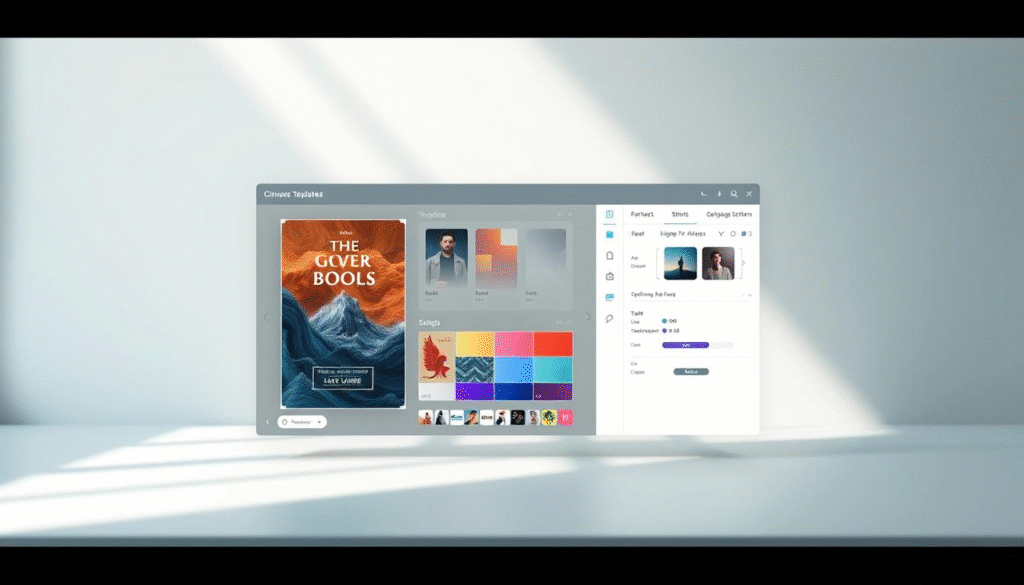
As a writer, I found Canva’s AI book cover maker to be a game-changer. It makes creating professional book covers easy and fun. Canva AI uses smart features to simplify the design process.
Canva is great for designing book covers, even if you don’t know much about design. It has amazing tools like:
- Magic Design for instant cover generation
- Text-to-image transformation
- Intelligent layout recommendations
- Extensive template library with 50,000+ options
Canva AI stands out because it’s easy to use and has lots of design tools. Authors can find over 2 million assets, like images and design elements, to make their book covers stand out.
| Feature | Benefit |
|---|---|
| AI Design Suggestions | Intelligent layout and color recommendations |
| Drag-and-Drop Editor | Easy customization without design skills |
| Free Plan | Accessible for indie authors |
I suggest trying Canva’s AI book cover maker for authors who want professional designs without complex design software. It’s perfect for creating eye-catching book covers with its easy-to-use features and lots of customization options.
Adobe Spark: Professional Design Made Simple

Designing book covers can be tough for authors without design skills. Adobe Spark AI is a great solution. It makes complex design easy and accessible.
As a creator, I’ve found Adobe Spark to be amazing for making book covers. It lets you turn ideas into real covers easily. You don’t need to be a graphic design expert.
Streamlined Design Templates
Adobe Spark has many design templates to help you create book covers. These templates include:
- Genre-specific design layouts
- Customizable color schemes
- Professional typography options
- Easy-to-adjust image placement
Advanced Integration Capabilities
Adobe Spark AI stands out because it works well with Adobe Creative Suite. This connection lets you make your book cover look even better.
The prices are good, from $9.99 to $19.99 a month. You get features like:
- 24/7 live customer support
- Multiple language support
- High data security standards
- 14-day conditional refund policy
Adobe Spark is great for design, but free designs have the Adobe Spark logo. If you want unique covers, consider a paid plan.
CoverDesignAI: Specialized Book Cover Solutions

I found CoverDesignAI to be a game-changer for authors looking for top-notch book covers. It uses AI to make creating book covers easy and personal.
CoverDesignAI is known for its unique way of making book covers. It lets authors use a custom cover creator that gets the needs of different genres. The AI system makes covers that feel deep and look great for each book type.
- Custom book cover generation
- Genre-specific design algorithms
- Personalized cover creation
- Commercial usage rights
The platform has many great features for authors:
| Feature | Description |
|---|---|
| AI Design Technology | Advanced algorithms for precise cover generation |
| Genre Customization | Tailored designs for romance, thriller, sci-fi, and more |
| Satisfaction Guarantee | 30-day full refund option |
CoverDesignAI is special because it focuses on making unique book covers that really show what a book is about. It uses the latest AI to make sure each cover feels real and grabs your attention.
Whether you’re new to writing or have been doing it for years, CoverDesignAI has what you need to make your book stand out. Their book covers turn your book’s first look from just okay to truly amazing.
Essential Features to Look for in AI Cover Design Tools

Choosing the right AI design tool for book covers is key. Not all tools are the same. Knowing what to look for can help you find the best one for your needs.
When checking out AI design tools, pay attention to a few important things. This guide will help you understand what to look for in AI book cover design.
Resolution and Quality Standards
Professional book covers need high-resolution images. Look for AI tools that offer:
- Minimum 300 DPI resolution for print-ready covers
- Support for high-quality vector and raster formats
- Ability to generate crisp, detailed images
Export Format Options
Being able to export your cover in different formats is important. Choose tools that support:
- PNG for digital platforms
- JPEG for web use
- TIFF for professional printing
- PDF for layout compatibility
Customization Capabilities
The best AI design tools let you customize a lot. Look for tools that offer:
| Customization Aspect | Importance |
|---|---|
| Text placement and styling | High |
| Color palette adjustments | Critical |
| Layer manipulation | Essential |
| Style variant generation | Valuable |
Pro tip: Try out the AI tool with sample prompts. This will show you its true power in creating amazing book covers.
“The right AI design tool can transform your book cover from good to extraordinary.” – Publishing Innovators
Legal Considerations and Usage Rights

Understanding AI art copyright and book cover usage rights is key for authors and publishers. As AI-generated book covers grow in popularity, knowing the legal side is vital.
Using AI for book cover design brings up several legal points:
- Copyright ownership of AI-generated art
- Commercial use rights
- Ethical considerations for creative professionals
- Transparency in AI content creation
The Authors Guild suggests being open about AI-generated parts in creative works. This openness keeps ethics high and clears things up for publishers and readers.
| AI Tool | Copyright Approach | Recommended Usage |
|---|---|---|
| Adobe Firefly | Uses licensed content | Preferred for professional use |
| Standard AI Services | Variable copyright policies | Require careful review |
I suggest picking AI tools that use licensed content to avoid legal issues. Publishers must know if any book parts, like the cover, are AI-made. This affects copyright and protection.
Transparency and ethical use of AI-generated imagery are key in today’s creative world.
When picking an AI tool for book covers, check their AI use rules. Some tools let authors choose not to use AI by just ticking a box during design.
Creating Professional Covers: Step-by-Step Guide
Making a stunning book cover with AI tools needs careful planning and creativity. My AI book cover tutorial will show you how to make a cover that grabs readers’ attention.

- Select the Right AI Platform
- Develop Clear Design Concepts
- Craft Precise Prompts
- Refine Visual Elements
Mastering Prompt Writing Techniques
Writing good prompts is key for amazing book covers. Break down your idea into clear, detailed instructions. This helps the AI understand what you want.
- Be Specific: Talk about the genre, mood, and style you want
- Include Color Palette: Tell the AI your favorite colors
- Reference Artistic Styles: Share covers that inspire you
Design Element Selection Strategies
Picking the right design elements makes a cover stand out. Focus on the typeface, images, and colors. This will make your cover look professional.
Pro tip: Always check your design at different sizes. This ensures it looks good as a thumbnail and full-size cover.
Great book covers tell a story before the reader opens the first page.
Cost Comparison: AI Tools vs Traditional Design
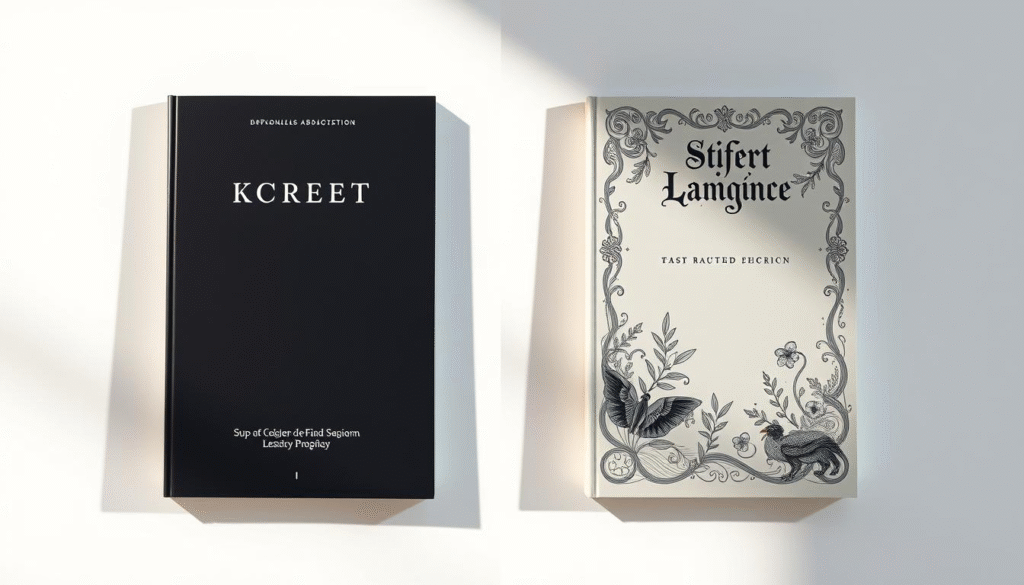
Authors have to choose between AI tools and professional designers for book covers. This choice affects your budget a lot.
Traditional design costs a lot. Designers charge $300 to $1,500, based on the project’s complexity and their fame. This can be too much for many authors.
AI tools are much cheaper than professional designers. Here’s what you can get:
- Free basic designs
- Low-cost subscription services ($10-$50 monthly)
- Per-design pricing under $100
- Unlimited design iterations
AI tools save money, but they might not be as unique. Generic design trends can make your cover less special. Professional designers offer a personal touch that AI can’t match.
Choosing the right option depends on your needs. If you’re on a tight budget, AI is a good choice. But if you want a cover that really stands out, you might want to go with a professional.
Ultimately, your book cover is an investment in your book’s first impression and its success.
Common Mistakes to Avoid in AI Cover Design
Creating book covers with AI tools is exciting. But, mistakes can ruin your project. Knowing the pitfalls of AI design is key to making covers that grab readers’ attention.

When using AI for book covers, several big errors can hurt your design:
Typography Traps
Typography is a big challenge in AI book cover design. Many designers make common mistakes that hurt their cover’s look:
- Using illegible or wrong fonts
- Mismatching font styles on the cover
- Not thinking about text readability at small sizes
Resolution and Visual Quality Challenges
Resolution problems can ruin a great book cover. AI design pitfalls include:
- Creating low-quality images that blur at small sizes
- Making designs that lose clarity when scaled
- Producing covers with pixelation or artifacts
| Mistake Type | Impact | Solution |
|---|---|---|
| Generic Imagery | Reduced Reader Interest | Use Specific Detailed Prompts |
| Poor Typography | Lower Conversion Rates | Specify Font Styles Carefully |
| Thumbnail Illegibility | Decreased Sales | Test Cover at Small Sizes |
By knowing these mistakes, you can make better AI book covers. These covers will stand out in a crowded market.
Future Trends in AI Book Cover Design

The world of AI design trends is changing how we make book covers. I’ve seen big changes in how AI is changing creative work. Now, AI is making book cover design in new and exciting ways.
There are many new things happening in AI book cover design:
- Hyper-personalized design algorithms that understand genre-specific visual languages
- Machine learning models capable of generating detailed, emotionally resonant cover art
- Real-time adaptation of design elements based on market trends
Tools like Canva and Adobe Spark show what AI can do in design. These platforms use smart algorithms to make design easier. They help designers and authors create great visuals fast and accurately.
AI is not replacing human creativity but expanding the boundaries of design possibilities.
The future of book covers will see even smarter systems. They will:
- Analyze what readers like
- Make images that fit the story
- Guess what visual trends will come next
Publishers and authors are seeing how AI can change book cover design. Tools like Spines are leading the way. They make sure covers look good and reach the right people.
Conclusion
As we finish our look at AI book cover design, I’m thrilled about the new possibilities it offers. The design world has changed a lot, thanks to AI. Now, authors and publishers have more creative options than ever before.
I’ve seen how AI can make designing book covers easier. Tools like Canva and Scribble’s software let you create professional-looking covers quickly. You don’t need to be a graphic design expert to use them.
But remember, AI is meant to help, not take over. The best book covers mix AI’s help with the creator’s own touch. Knowing how to use each tool well can make your cover stand out.
My last piece of advice is to keep trying new things and stay open to new tech. The field of AI book cover design is growing fast. By combining your ideas with AI’s power, you can make something truly special.
FAQs
What are the main advantages of using AI for book cover design?
AI book cover design tools save money and work fast. They are easy for authors to use, even if they don’t know much about design. You get professional-looking covers that fit your book’s theme and genre.
Are AI-generated book covers legal to use?
Most AI tools let you use their designs for commercial purposes. But, always check the terms of service. Make sure you have the right permissions and know about copyright laws.
Which AI tool is best for different book genres?
Midjourney is great for visual ideas, and DALL-E 3 for realistic images. Ideogram is good for typography, and CoverDesignAI for specific genres. Choose the tool that fits your book’s needs best.
How much does AI book cover design cost?
Prices vary from free to $50 a month. This is much cheaper than hiring a designer, who might charge $300 to $1,500.
Do I need design skills to use AI book cover tools?
No, you don’t need design skills. Tools like Canva and Adobe Spark are easy to use. They offer templates that help you create professional covers.
Can AI completely replace human book cover designers?
AI is powerful, but it can’t replace human designers fully. The best approach is to use AI for ideas and then refine them with human creativity. This ensures the cover truly represents your book.
What file formats can I export from AI book cover tools?
You can export in JPEG, PNG, and TIFF formats. For print books, make sure the resolution is high enough (300 DPI) for platforms like Amazon KDP and IngramSpark.
How can I create the best prompts for AI cover design?
Good prompts are specific and detailed. Mention the mood, colors, and genre-specific elements you want. Use clear language and provide reference images or style guidelines to help the AI.

